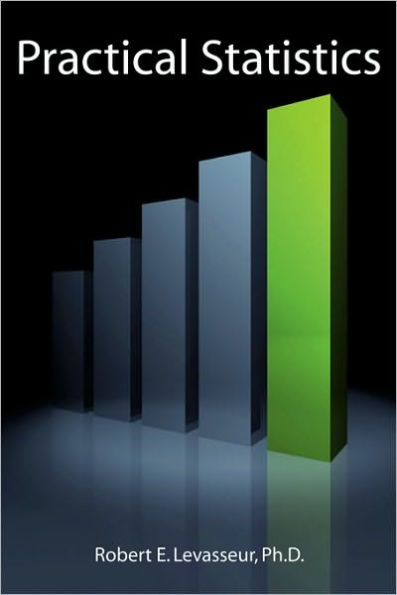Practical Statistics: Using Basic Statistics to Make Better Decisions
Arguably, everyone wants to make better decisions, be they personal or professional. One way to do that is to learn something about basic probability and statistics. However, for most people this is a frightening prospect.
What beginners need to cross the chasm is a simple (not to be confused with simplistic), basic, yet systemic book on the subject. Sounds easy enough. However, when I tried to find such a book for an undergraduate statistics class I was teaching, I could not find one.
Most statistics books, even the so-called easy ones with titles which suggest that anyone can learn statistics by reading them, do not focus on statistical reasoning and practical application. Instead, they emphasize theory and mathematical manipulation. As a result, many people trying to learn the essentials of this important subject (particularly the majority who are not strong in math) find themselves intimidated and confused, rather than engaged and informed.
Frustrated by my search for a simple, basic, and systemic book on the subject to using statistics to make better decisions, I decided to write my own. The result was Practical Statistics.
Practical Statistics provides a pragmatic, application-focused alternative to the existing books in the field for anyone who wants to learn something about statistics, so he or she can use it to make better decisions. For this reason, it assumes only knowledge of basic arithmetic and a willingness to learn. Yet, it shows how to use mathematics to support statistical reasoning when solving important problems of testing, estimation, and forecasting.
While this book is for problem solvers and decision makers, not mathematicians, it is a real statistics book. As a professor of management who has taught statistics to students at the undergraduate and doctoral levels, I made sure of that.
This book is an integrated treatment of the subject, leading progressively from fundamental concepts to more advanced ideas. Rather than treating them in a highly theoretical manner, or worse, leaving them out, I introduce the necessary mathematical formulas, which are exceedingly powerful if used correctly, in as intuitive and non-threatening a way as possible.
Some other features of the book include: (a) the use of a unique, decision model framework—to build a picture of practical statistical reasoning, analysis, and decision making that cumulatively integrates theory and practice; (b) concrete examples of real-world problems with detailed explanations of their solutions—to illustrate the application of statistical concepts and mathematical formulas; and (c) optional pop quizzes with answers and explanations of the methods used and why—to help test and refine statistical reasoning and analysis.
Students interested in (or required to study) statistics should find this book useful as an introduction to the field. Therefore, they should read it before tackling a more advanced, theoretical book or textbook. Decision makers who want to improve the quality of their problem solving should find this book’s focus on decision models and statistical reasoning a comfortable, welcome alternative to the abstract theoretical focus of most management texts on the subject or the number–crunching, black–box feel of most spreadsheet tools available for statistical analysis.
Finally, interested readers who just want to learn something about statistics for their personal use should find the consistent focus on concrete, real–world examples and practical data analysis helpful and motivating.
I have tried to write a book that is straightforward and complete enough to demystify statistics while conveying the essential elements from which it derives its power. I hope you will agree.

